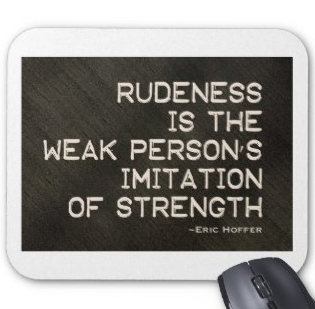6 Easy Tips to Overcome Communication Failures
We all think we can communicate. After all, we are all good listeners. We are all very good at sharing information and conveying messages. Right? Wrong! Most people are not good communicators. As we move through the corporate world, we are sensitized to “time is money”, “get to the point” and “what’s your ask?” Our leaders, mentors and peers share these messages with us constantly through words or body language. Add to that, we all have our own agendas. We do. You can deny it, but if you do, you are only fooling yourself. So, we add all of this together and we are hard-pressed for time and we want to achieve our objectives and meet our Key Performance Indicators (KPIs). Now, think about your customers. Think about your prospects. How are you communicating with them? There is a good chance that there are some communication failures happening. Here are 6 easy tips to overcome communication failures:
1. Know your Audience
This is by far the oldest piece of advice going when it comes to communications. Despite this, I am often surprised by how many people and as a result organizations, just don’t know their audience. They use communication media that they feel most comfortable with and communicate when they want to communicate. They often have more than one audience, but choose to communicate in exactly the same manner for each.
Key Take-away: What is (are) the personas of your audience(s)? Are they in their 20s, 30s or 60s? All of the above? How do they consume content? How often do they want to hear from you and consume content? Do they prefer mainstream media, social media or public forums? Does it depend on the situation? If you can’t answer these questions with validated data, you have some homework to do. If you don’t have the resources in-house, hire a consultant to find the answers for you.
2. Slow Down
Yes, this is hard for most of us. Everything is a rush. After all, time is money right? It is..but and there is a big BUT..if you fail to communicate with your customers or prospects, the costs will be much higher. Customer retention becomes an issue. Reputation management becomes an issue. Stakeholders, including boards of directors get riled up as profits dip and stock prices follow. Slow down and pay attention to what is happening in your environment. When you do this, you hear, see and learn a lot. People notice that you are present. They appreciate this. Showing up only when you want something also gets noticed.
Key Take-away: Be present. Don’t just show up when you want something or when there is a problem to fix. Your customers or prospects will soon associate you with only being there when YOU want something or when something has gone horribly wrong. Customers and prospects are people. People need and want relationships. They need to have confidence in you. They need to trust you and trust that your organization will do the right thing.
3. Follow-up and Follow-through
Similar to knowing your audience, this is one of the oldest and best pieces of advice when it comes to communication. As mentioned in Good Customer Service: What You Don’t Know Can Hurt You, be sure to follow-up on your customers or prospects. This builds real trust and confidence. And always under promise and over deliver. This can be hard to do at times, but consistent application will pay off in spades.
Key Take-away: If you aren’t sure of your answer, then say so. If you can’t deliver the product at a specific time, be up front. The sooner the better. And, when you do execute on “whatever” it is, circle back to ensure that your customer or prospect got what he or she needed. Yes, it can be time consuming, but it will be worth it.
4. Put Your Best Foot Forward
Just like meeting your significant other’s parents for the first time, you want to put your best foot forward. For a brand, this might be about the person they send to a meeting or the one that acts as their spokesperson. Regardless of which scenario it is, you want to ensure that your point person has the facts, can present the corporate brand meeting or exceeding the brand standards and that that person or persons have the ability to make decisions and answer questions – any questions.
Key Take-away: Putting your best foot forward, or your best people forward does not necessarily mean the most senior and certainly not the most junior. Each situation requires consideration and judgement. You need to consider your audience and the situation. Who will provide win/win results? Who will irritate or provoke?
5. Be Timely
This one is quite important. For any communication, it needs to be timely. Your communications’ professionals need to always be thinking about timing. Depending what the communication is, too early and you sell the farm. Too late, or too little you will lose creditability and trust.
Key Take-away: Communications should never be an after-thought or relegated to lower importance. Communications is a strategic component of everything you do.
6. There is No Such Thing as Over Communicating
Once a upon a time someone actually said this to me – that we were over communicating. Think about that for a moment. Think about how people process information. Think about how people receive information. Think about how many times a message MUST be shared before it is actually absorbed. This is all proven documentable information. If you apply fact and research, you cannot possibly over communicate. It is that simple.
Key Take-away: Just because you know the answer or a few of your stakeholders know the answer, doesn’t mean your audience does. People absorb information differently. Therefore you must apply proven communication techniques using various media and multiple messages to reach your audience.
Like this post? Follow me on Twitter: @MacLeanHeather














